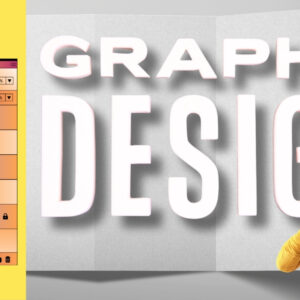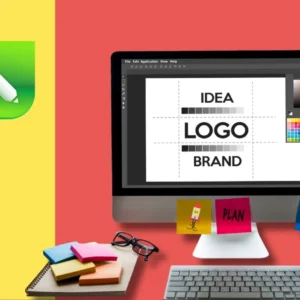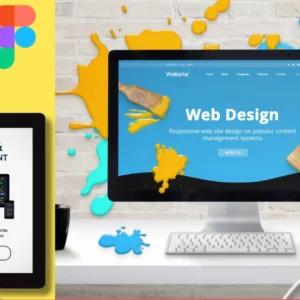Colors are everywhere around us. They make us feel happy, sad, excited, or calm. But did you know that there’s a science behind how colors work? This is called color theory for beginners, and it’s one of the most important skills you can learn if you want to create beautiful designs.
Whether you’re designing a website, painting a picture, or choosing clothes, understanding color theory for beginners will help you make better choices. Don’t worry – it’s not as hard as it sounds. Let’s start with the basics.
What Is Color Theory?
Color theory is simply the study of how colors work together. It teaches us which colors look good next to each other and which ones don’t. Think of it like cooking – just as some ingredients taste great together while others don’t, some colors work well together while others clash.
Color theory for beginners helps us understand why a red apple looks so appealing against green leaves, or why a blue sky with white clouds feels so peaceful. It’s not magic – there are rules that explain why certain color combinations work.
The Color Wheel: Your Best Friend
The color wheel is like a map for colors. It shows us how all colors relate to each other. Imagine a circle divided into different colored sections – that’s your color wheel.
Primary Colors
Let’s start with the three most important colors: red, blue, and yellow. These are called primary colors. They’re special because you can’t make them by mixing other colors together. Think of them as the building blocks of all other colors.
Secondary Colors
When you mix two primary colors, you get secondary colors:
- Red + Blue = Purple
- Blue + Yellow = Green
- Yellow + Red = Orange
Tertiary Colors
These are made by mixing a primary color with a secondary color. For example, mixing red with orange gives you red-orange. There are six tertiary colors in total, and they fill in the gaps on the color wheel.
Understanding this basic structure is key to mastering color theory for beginners. The color wheel shows us that colors have relationships with each other, just like family members.
Warm vs. Cool Colors
Colors can make us feel warm or cool, just like temperature. This is another important part of color theory for beginners.
Warm Colors
Warm colors remind us of fire, sun, and heat. They include:
- Red
- Orange
- Yellow
- And colors that contain these (like pink or peach)
Warm colors make us feel energetic, happy, and excited. They seem to jump forward and grab our attention. Think about how a bright red stop sign catches your eye immediately.
Cool Colors
Cool colors remind us of water, sky, and ice. They include:
- Blue
- Green
- Purple
- And colors that contain these (like turquoise or lavender)
Cool colors make us feel calm, peaceful, and relaxed. They seem to step back and create a sense of distance. A cool blue bedroom feels more restful than a bright red one.
Color Harmony: Making Colors Work Together
Color harmony is when colors look good together. It’s like having a good friendship – everything just clicks. Color theory for beginners teaches us several ways to create harmony.
Complementary Colors
These are colors that sit opposite each other on the color wheel. Examples include:
- Red and Green
- Blue and Orange
- Yellow and Purple
Complementary colors create strong contrast and grab attention. They make each other look brighter and more vibrant. Think of a red strawberry on a green leaf – the colors make each other pop.
Analogous Colors
These are colors that sit next to each other on the color wheel. Examples include:
- Blue, Blue-Green, and Green
- Red, Red-Orange, and Orange
- Yellow, Yellow-Green, and Green
Analogous colors create a peaceful, harmonious feeling. They’re easy on the eyes and work well together because they share similar qualities. A sunset with orange, red, and yellow is a perfect example.
Triadic Colors
These are three colors that are evenly spaced on the color wheel. The most common example is the primary colors: red, blue, and yellow. Triadic colors create vibrant, playful combinations while still maintaining harmony.
Monochromatic Colors
This means using different shades, tints, and tones of the same color. For example, using light blue, medium blue, and dark blue together. Monochromatic schemes create a clean, elegant look that’s hard to mess up.
Understanding Color Properties
Every color has three main properties that affect how it looks and feels. This is crucial knowledge for color theory for beginners.
Hue
Hue is simply the color itself – red, blue, green, etc. It’s what we usually mean when we say “color.” The hue tells us where the color sits on the color wheel.
Saturation
Saturation is how pure or intense a color is. A highly saturated red is bright and vivid, like a fire truck. A low-saturation red is more muted and gray, like a dusty rose.
Value
Value is how light or dark a color is. A light value is called a tint (like pink is a tint of red), and a dark value is called a shade (like maroon is a shade of red).
Understanding these properties helps you create more interesting and professional-looking color combinations.
Color Psychology: How Colors Make Us Feel
Colors don’t just look different – they make us feel different too. This emotional side of color theory for beginners is incredibly powerful.
Red
Red is the color of energy, passion, and urgency. It increases heart rate and creates excitement. That’s why many restaurants use red in their logos – it stimulates appetite. However, too much red can feel aggressive or overwhelming.
Blue
Blue is calming and trustworthy. It reminds us of the sky and ocean, creating feelings of peace and stability. Many banks and tech companies use blue because it makes people feel they can be trusted.
Green
Green represents nature, growth, and harmony. It’s the easiest color for our eyes to process, making it very comfortable to look at. Green is often used in designs about health, money, or the environment.
Yellow
Yellow is cheerful and optimistic. It’s associated with sunshine and happiness. However, bright yellow can be tiring to look at for long periods, so it’s best used as an accent color.
Orange
Orange is energetic and friendly. It combines the energy of red with the happiness of yellow. It’s great for creating a sense of enthusiasm and warmth.
Purple
Purple is mysterious and luxurious. It’s associated with creativity, wisdom, and royalty. Light purples feel calming, while dark purples feel more dramatic.
Practical Tips for Using Color Theory
Now that you understand the basics of color theory for beginners, here are some practical tips to help you use colors effectively:
Start Simple
Begin with just two or three colors. It’s easier to make a few colors work well together than to juggle many different ones. Once you’re comfortable with simple combinations, you can gradually add more colors.
Use the 60-30-10 Rule
This rule suggests using one dominant color for 60% of your design, a secondary color for 30%, and an accent color for 10%. This creates balance and prevents any color from overwhelming the others.
Consider Your Audience
Think about who will see your design. Children might respond well to bright, playful colors, while business professionals might prefer more subdued, sophisticated colors.
Test Your Colors
Colors can look different on different screens or when printed. Always test your color combinations in the final format to make sure they work as expected.
Trust Your Eyes
While color theory for beginners provides helpful guidelines, don’t ignore your instincts. If something looks good to you, it probably is good. The rules are there to help, not to limit your creativity.
Common Mistakes to Avoid
Learning color theory for beginners means understanding what not to do as well as what to do:
Using Too Many Colors
More isn’t always better. Too many colors can make your design look chaotic and confusing. Stick to a limited palette for better results.
Ignoring Contrast
Make sure there’s enough contrast between your colors, especially between text and background. Poor contrast makes things hard to read and can exclude people with vision difficulties.
Following Trends Blindly
While it’s good to be aware of color trends, don’t use them just because they’re popular. Choose colors that fit your message and audience.
Forgetting About Context
Colors can look different depending on what’s around them. A color that looks great on its own might not work well in your specific design context.
Tools to Help You
There are many online tools that can help you apply color theory for beginners:
- Color wheel generators help you find harmonious color combinations
- Palette generators create color schemes from images
- Contrast checkers ensure your colors are accessible to everyone
- Color picker tools help you identify exact color values
Practice Makes Perfect
Like any skill, understanding color theory for beginners improves with practice. Start by analyzing designs you like. What colors do they use? How do those colors make you feel? Why do you think the designer chose those particular colors?
Try creating your own color palettes based on things you see every day – a sunset, a flower, a photograph. This will help you develop your color sense naturally.
Conclusion
Color theory for beginners might seem overwhelming at first, but it’s really just about understanding how colors work together. Remember the basic principles: use the color wheel to find harmonious combinations, consider the emotional impact of your colors, and don’t be afraid to experiment.
The most important thing is to start practicing. The more you work with colors, the more natural these concepts will become. Soon, you’ll be choosing colors confidently and creating beautiful, effective designs.
Whether you’re designing a poster, choosing paint for your room, or putting together an outfit, color theory for beginners will help you make better choices. Take your time, experiment, and most importantly, have fun with colors. After all, they’re one of the most beautiful and powerful tools we have for communication and creativity.







Add a Comment